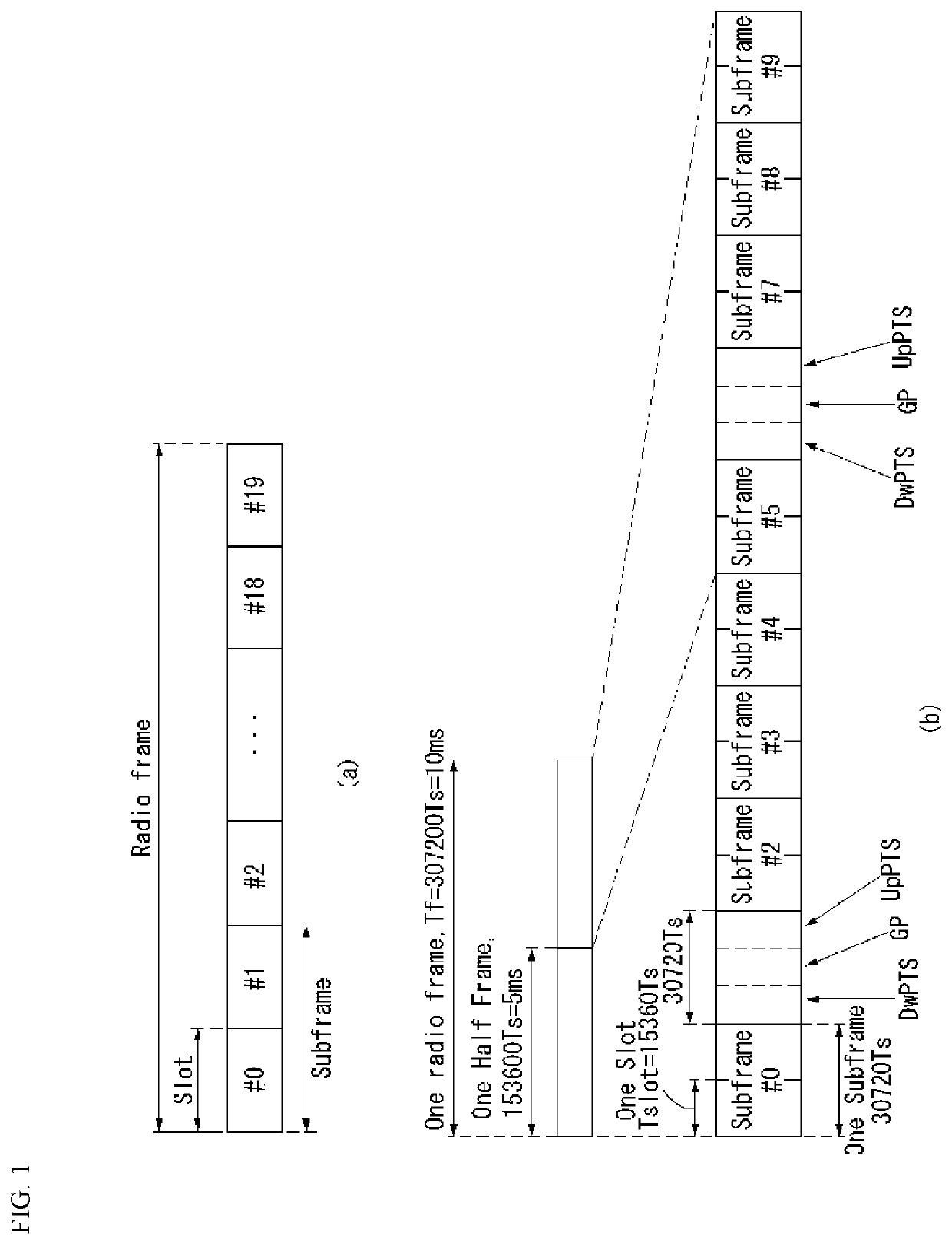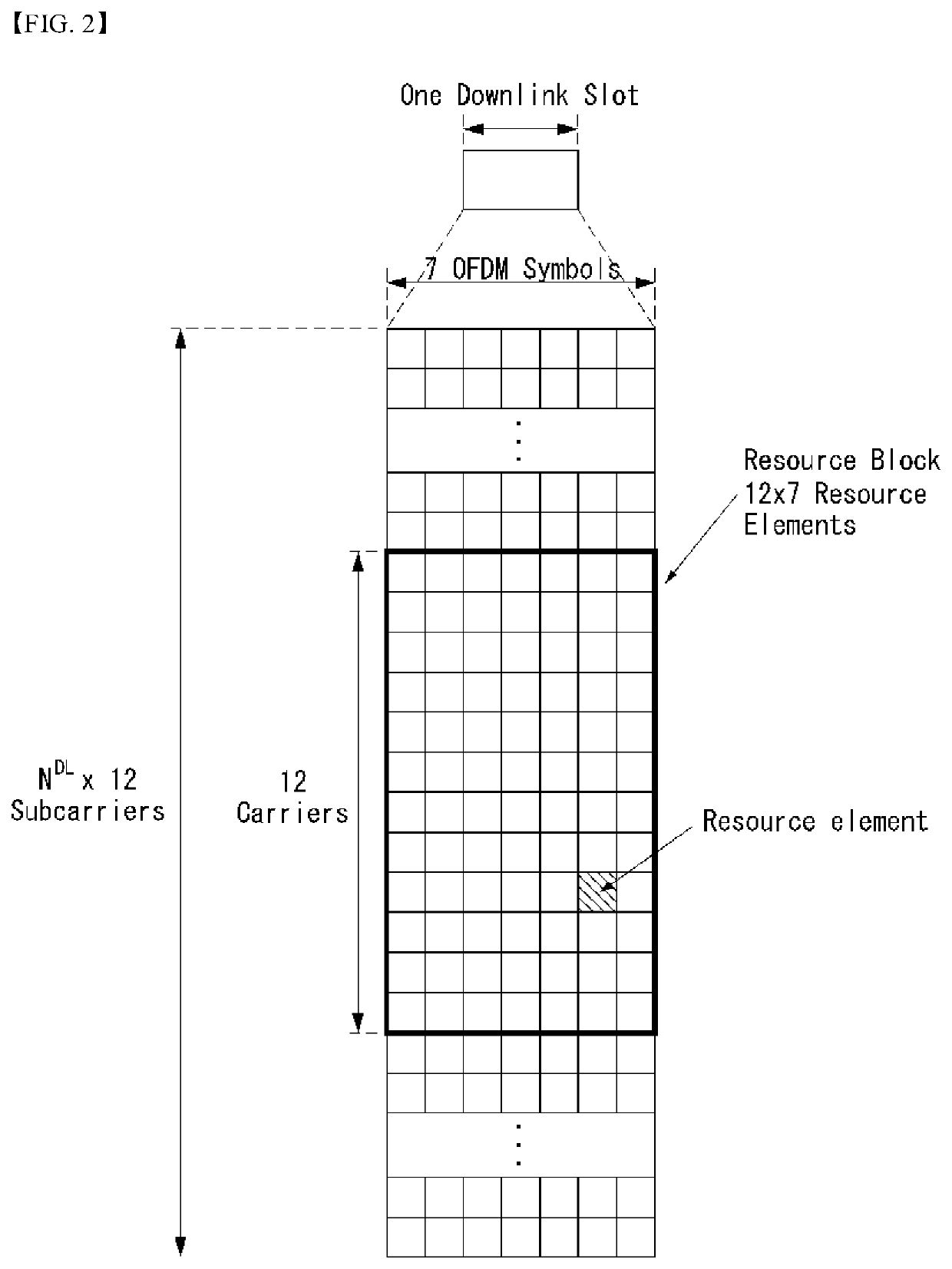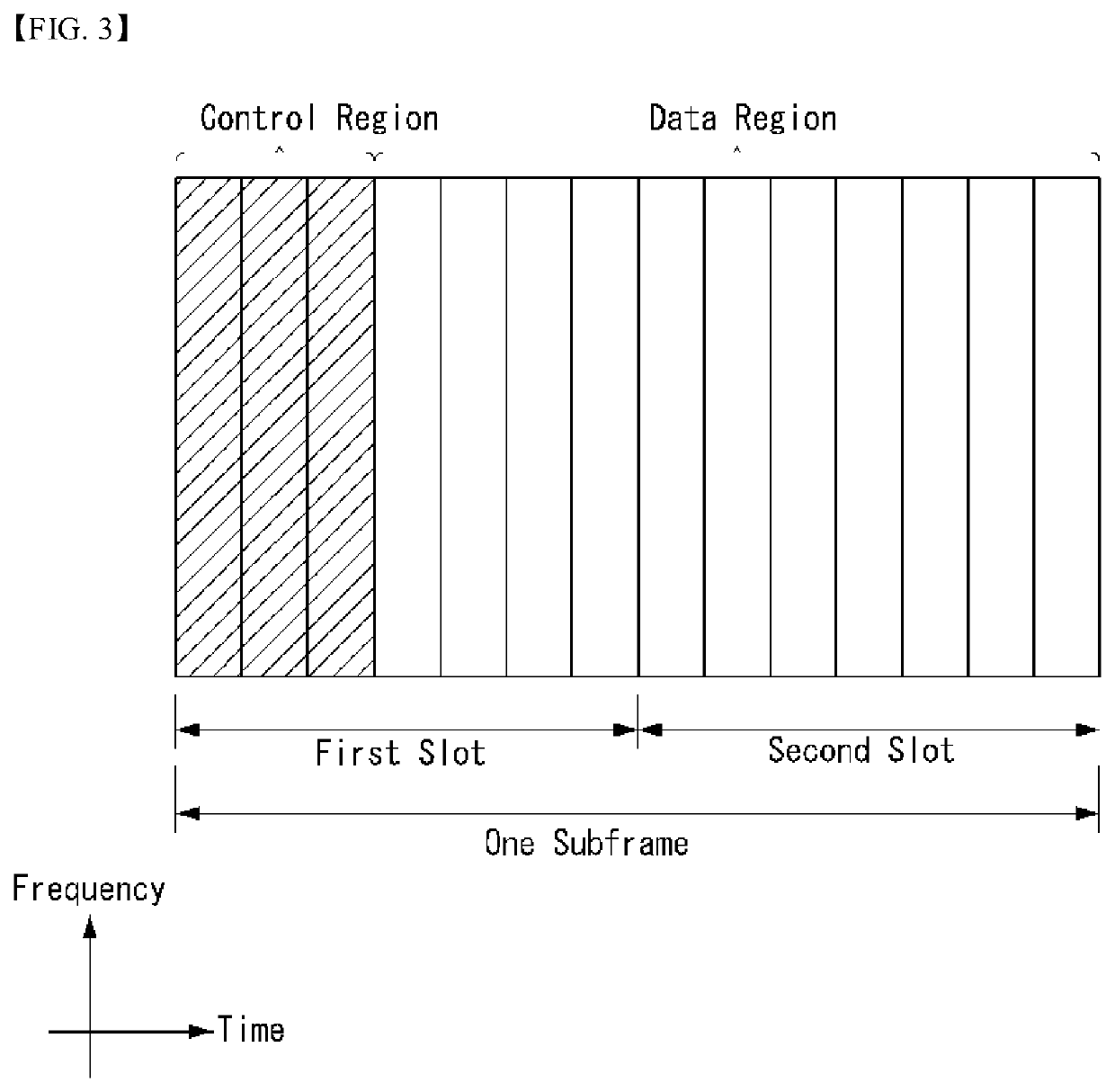Method for transmitting uplink physical channel in wireless communication system and device for supporting same
- Summary
- Abstract
- Description
- Claims
- Application Information
AI Technical Summary
Benefits of technology
Problems solved by technology
Method used
Image
Examples
first embodiment
[0269]First, a method of controlling a transmission power depending on a state of HARQ-ACK and a method of controlling a transmission power in a power-limited situation are described.
[0270]Methods described below are merely divided for convenience of explanation, and thus it is apparent that configuration of any method can be replaced by or combined with configurations of other methods.
[0271](Method 1)
[0272]A method of controlling power considering a ratio of a NACK state and / or a priority of service is described in detail below.
[0273]For ultra-reliable low latency communication (URLLC) service, it may be more important to reduce a non-acknowledgement (NACK)-to-acknowledgement (ACK) error rather than an error such as ACK-to-NACK or ACK-to-discontinuous reception (DTX).
[0274]If an error such as ACK-to-NACK or ACK-to-DTX occurs, the error may cause an unnecessary retransmission, but may not greatly affect reliability of transmission itself. On the other hand, the NACK-to-ACK error mak...
second embodiment
[0288]A method of calculating and / or determining a power control related parameter considering a priority of service is described in detail.
[0289]For example, for PUCCH format 1 / 2 / 3, parameter h{n_CQI, n_HARQ, n_SR} is defined so that power is determined by bits of transmitted uplink control information (UCI).
[0290]In this instance, a rule may be defined so that when multiple UCIs with different services are transmitted via one channel, a different weight is applied for each service.
[0291]As a detailed example, n_HARQ is in the form of linear combination of the number of HARQ-ACK bits for URLLC PDSCH and the number of HARQ-ACK bits for non-URLLC (e.g., eMBB) PDSCH and may be calculated as the following Equation 5.
n_HARQ=a*n_{HARQ,URLLC}+b*n_{HARQ,non-URLLC} [Equation 5]
[0292]In Equation 5, ‘a’ denotes a weight for HARQ-ACK of PDSCH corresponding to service of a higher priority. For example, a>1, b=1 or a=1, b<1 may be previously defined / promised, or configured / indicated (by a base ...
third embodiment
[0293]Next, a method of controlling power by configuring a transmit power control (TPC) related definition and / or rule is described. Methods described below are merely divided for convenience of explanation, and thus it is apparent that configuration of any method can be replaced by or combined with configurations of other methods.
[0294](Method 1)
[0295]First, a method of applying and / or using TPC considering repetition transmission of downlink control information (DCI) is described in detail.
[0296]Specifically, as one method to improve reliability of a control channel, DCI repetition may be considered. The DCI repetition may expect a gain by combining respective PDCCHs, or may expect an opportunistic gain from the possible perspective of data channel scheduling if any one of a plurality of PDCCHs based on non-combining succeeds in decoding.
[0297]One data channel may be scheduled by the DCI repetition, and each DCI may include a TPC command (or DCI field corresponding to this, etc.) ...
PUM
 Login to View More
Login to View More Abstract
Description
Claims
Application Information
 Login to View More
Login to View More - R&D
- Intellectual Property
- Life Sciences
- Materials
- Tech Scout
- Unparalleled Data Quality
- Higher Quality Content
- 60% Fewer Hallucinations
Browse by: Latest US Patents, China's latest patents, Technical Efficacy Thesaurus, Application Domain, Technology Topic, Popular Technical Reports.
© 2025 PatSnap. All rights reserved.Legal|Privacy policy|Modern Slavery Act Transparency Statement|Sitemap|About US| Contact US: help@patsnap.com



